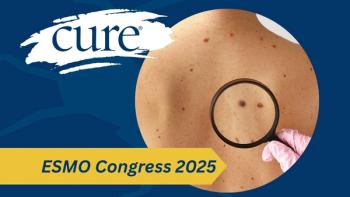
Four-Drug Regimen Improves Survival in Advanced Colorectal Cancer
A recent trial found that a four-drug regimen showed improved survival for patients with advanced colorectal cancer.
Researchers saw a modest improvement in progression-free survival (PFS) for patients with advanced colorectal cancer (CRC) when irinotecan was added to standard chemotherapy plus an angiogenesis inhibitor as induction therapy, according to the results of a randomized trial.
Patients with advanced colorectal cancer (CRC) had a modest gain in progression-free survival (PFS) with the addition of irinotecan to standard chemotherapy plus an angiogenesis inhibitor as induction therapy, a randomized trial showed.
The four-drug FOLFOXIRI regimen (5FU-folinic acid-oxaliplatin-irinotecan) was associated with a nine-month PFS of 68 percent compared with 57 percent for patients who received the three-drug FOLFOX regimen. The objective response rate (ORR) also was higher with FOLFOXIRI, and the four-drug regimen was associated with a median PFS of 12 months versus 10 with FOLFOX.
Although all of the efficacy endpoints favored FOLFOXIRI, none of the differences achieved statistical significance, which probably resulted from insufficient sample size, according to a report at the Gastrointestinal Cancers Symposium in San Francisco.
“The protocol is well tolerated, without an increase in clinically relevant toxicity in this mixed patient population, which included patients up to 82 years of age,” said Hans-Joachim Schmoll, M.D., a medical oncologist at University Clinic Halle in Germany. “Global quality of life parameters improved despite treatment in the experimental arm. These data further support the efficacy and good tolerability of the four-drug regimen for first-line treatment for patients with advanced colorectal cancer.”
Despite widespread use in the treatment of advanced CRC, the FOLFOX regimen has limited activity, which has led to several studies of alternatives. An investigation of FOLIRI-bevacizumab with or without oxaliplatin found FOLFOXIRI superior to FOLFIRI for all outcomes assessed. Investigators in two other studies evaluated FOLFOX-bevacizumab with or without irinotecan in patients with advanced CRC and unresectable liver metastases.
Schmoll and colleagues continued the evaluation of four-drug induction therapy in a randomized trial involving patients with unresectable advanced CRC, ECOG performance status less than 2 and a life expectancy longer than three months.
Patients were randomized to six months of induction therapy with FOLFOX-bevacizumab or FOLFOXIRI-bevacizumab. Following induction, patients received a maximum of 12 months maintenance treatment with 5FU-folinic acid or capecitabine, along with bevacizumab. At progression, patients could receive second-line therapy at the investigators’ discretion.
The primary endpoint was PFS at nine months. Other outcomes of interest included response rate, PFS and overall survival.
Investigators randomized 250 patients, and 241 were included in the analysis. The patients had a median age of about 61, and almost had 0 to 1 performance status. About 70 percent of the patients were intermediate risk by European Society for Medical Oncology criteria. About half of the patients were RAS/BRAF negative, and localization was on the left in 70 percent to 75 percent of the patients.
The 11 percent absolute difference in nine-month PFS did not meet prespecified criteria for statistical significance, nor did the 9 percent difference in ORR (70 percent vs 61 percent). The two-month difference in median PFS represented a 20 percent reduction in the hazard for progression or death but also did not achieve statistical significance.
A subgroup analysis showed a consistent trend toward better PFS with the four-drug regimen, including lesion location (left or right), mutation status (mutated or wild type) and various combinations of location and mutation status. However, none of the analyses yielded statistically significant differences. The greatest difference emerged from analysis of patients with left-sided, wild-type lesions, which were associated with a median PFS of 13.1 months with irinotecan and 9.6 without.
Rates of adverse events (AEs) were similar between treatment groups, including all grades and grade 3/4. Additionally, rates were similar for specific types of AEs, including hematologic and nonhematologic toxicities.
Scheduled qualify-of-life assessments showed little variation between the groups across cycles of therapy, including induction, maintenance, and end of the study.





